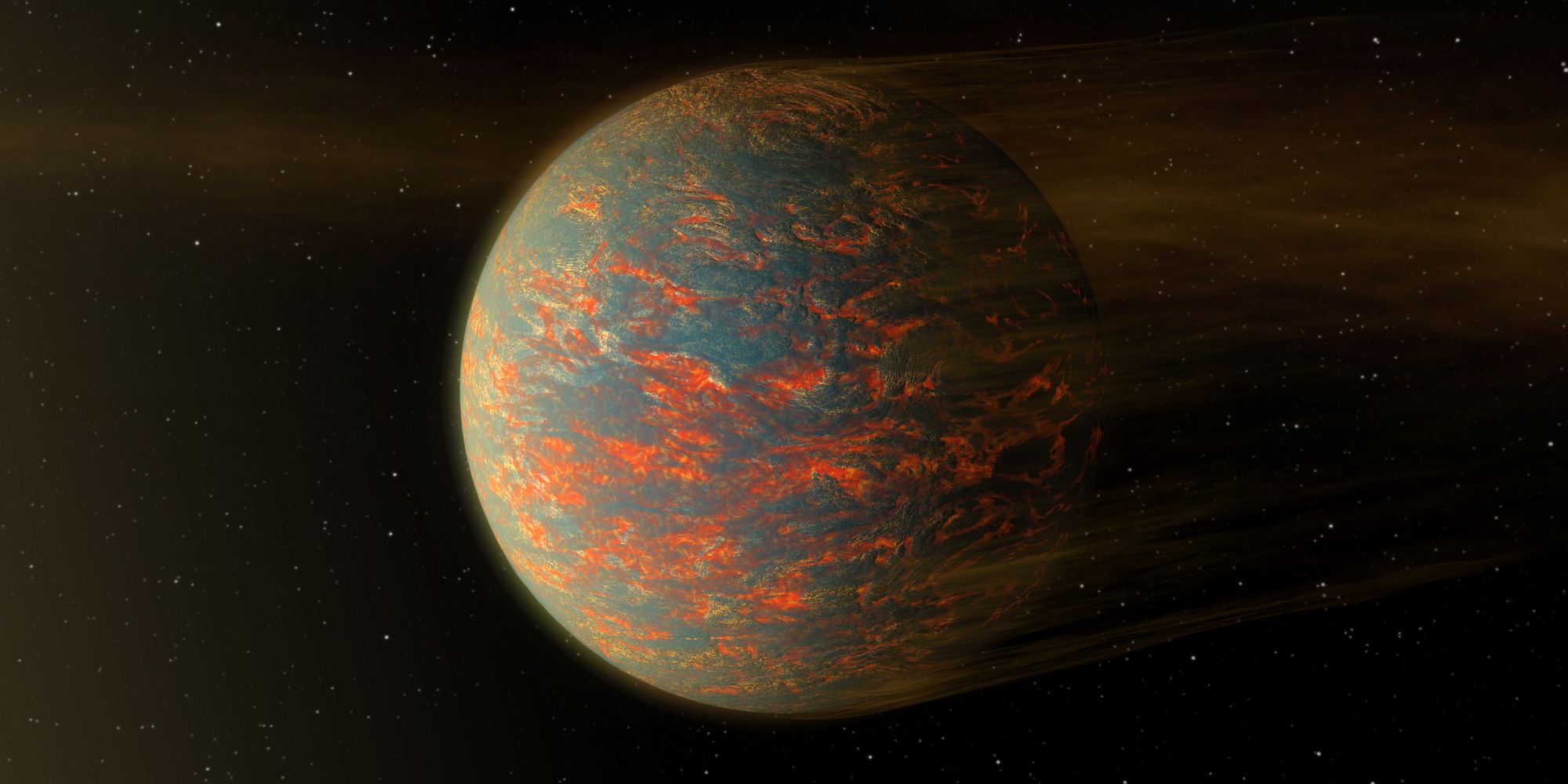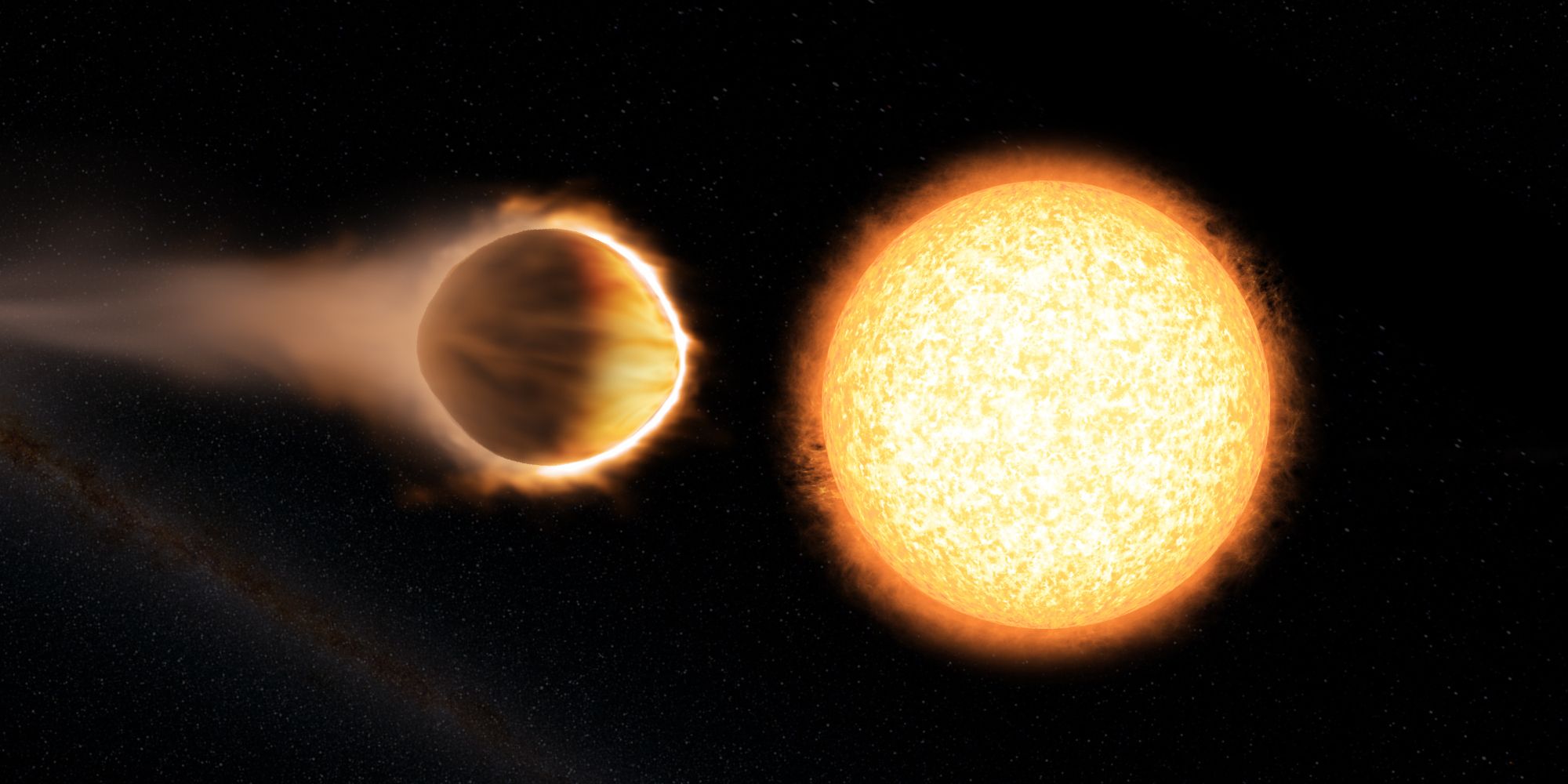WASP-76b is a planet with atmospheric temperatures so high that it is said to melt iron which rains down on its night side, but new research suggests that the hellish space anomaly is even hotter than previously thought. Discovered in 2016, this one falls in the hot Jupiter exoplanet class and has some extremely interestingly characteristics. This steaming planet is lighter than Jupiter, but almost twice its size and circles a little too close to an F-type star.
Thanks to its close proximity to the star, temperatures on the planet are said to exceed the 2,400 centigrade mark, which is hot enough to melt a lot of metals. Such is the infernal state of the affairs that scientists predict that vaporized iron is carried from the planet’s dayside to the night side where it condenses and forms clouds that rain iron. The planet is actually tidally locked, which means one face of the planet always faces its star, keeping things permanently toasty on a planetary scale.
However, new research by a team of scientists from Cornell University, University of Toronto, and Queen’s University Belfast proposes that WASP-76b is even hotter than previously thought. While performing high-resolution transit spectroscopy of the planet, the team detected the presence of ionized Calcium Triplet in the planet’s atmosphere, which suggests that the atmospheric layers studied so far are hotter than previously thought. For the unaware, Calcium Triplet refers to a triplet of three ionized Calcium spectral lines that are also one of the strongest spectral features of stars when they are being studied in the optical or near-infrared region. More importantly, the Calcium Triplet also serves as a complex function of temperature, surface gravity & metallicity in stars while studying them.
This Planet Literally Rains Down Inferno
Scientists behind the new research haven’t specified exactly how much hotter WASP-76b is compared to previous estimates, but the findings are astonishing nonetheless. However, this is not the first time that ionized Calcium has been detected in the atmosphere of an ultra-hot planet. In 2019, scientists detected the presence of ionized calcium on two giant exoplanets named KELT-9b and WASP-33b. As for the reason why WASP-76b is so hot, well, it has to do a lot with its distance from the sun, which happens to be just 0.033 AU. In comparison, the distance of Mercury from the Sun is roughly ten times larger than that, but its temperature is still known to reach a not-so-balmy 430 Centigrade on its dayside.
The orbital period of WASP-76b is just 1.8 days, which means a year on the planet passes in just about 1.8 Earth days. With the detection of ionized calcium on the ultra-hot Jupiter, the planet appears not just hot enough to vaporize the human bone, but it can likely ionize it as well. Scientists are now looking to perform more comprehensive spectral studies to know more about this infernal planet. Interestingly, another recent study may have spotted the first planet that orbits a total of three stars in a circumtriple system.
Source: Cornell University


